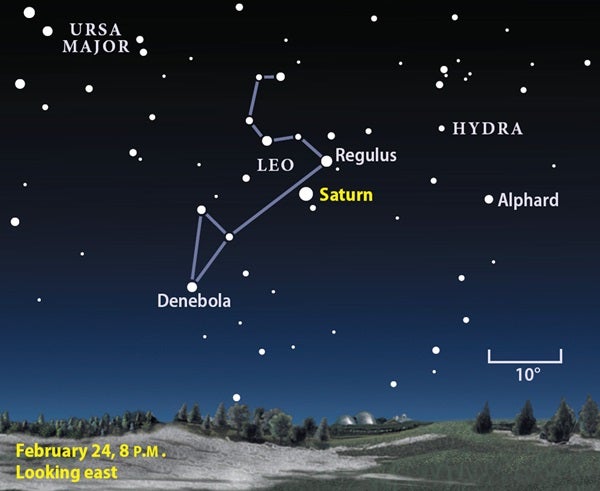Shortly after the Sun sets, look east to see Saturn rising with the stars of Leo the Lion. Look 5° (a bit less than the width of three fingers held at arm’s length) west of Saturn for Leo’s brightest star, Regulus. In the early evening, Regulus will lie to Saturn’s upper right.
Early evening is not the best time to turn your telescope on Saturn, however. That’s when the thickest part of Earth’s atmosphere will lie between you and the planet. Just 2 hours later, the planet lies 25° high in a dark sky — a decent altitude for low-power viewing. For higher-magnification views (above 100x) or if you want to try photographing the planet through your telescope, wait until Saturn climbs at least 45° above the horizon (halfway up), an altitude it achieves by 10 P.M. in late February.
Saturn’s disk reaches an apparent size of 20 arcseconds at opposition. Its diameter is small — one arcsecond equals only 1/3,600 of 1°. For comparison, a quarter seen at a distance of 860 feet (262 meters) covers 20 arcseconds. The planet’s rings more than double this value, spanning 45 arcseconds east to west. The rings tilt only 8° to our line of sight. This slim tilt allows us to see more of the planet’s globe.
“Saturn’s appearance through a telescope tends to startle non-observers,” says Astronomy magazine contributing editor Raymond Shubinski. “Some people seeing it for the first time think it’s fake, or a slide. In reality, it’s one of the most amazing sights a telescope will reveal.”










